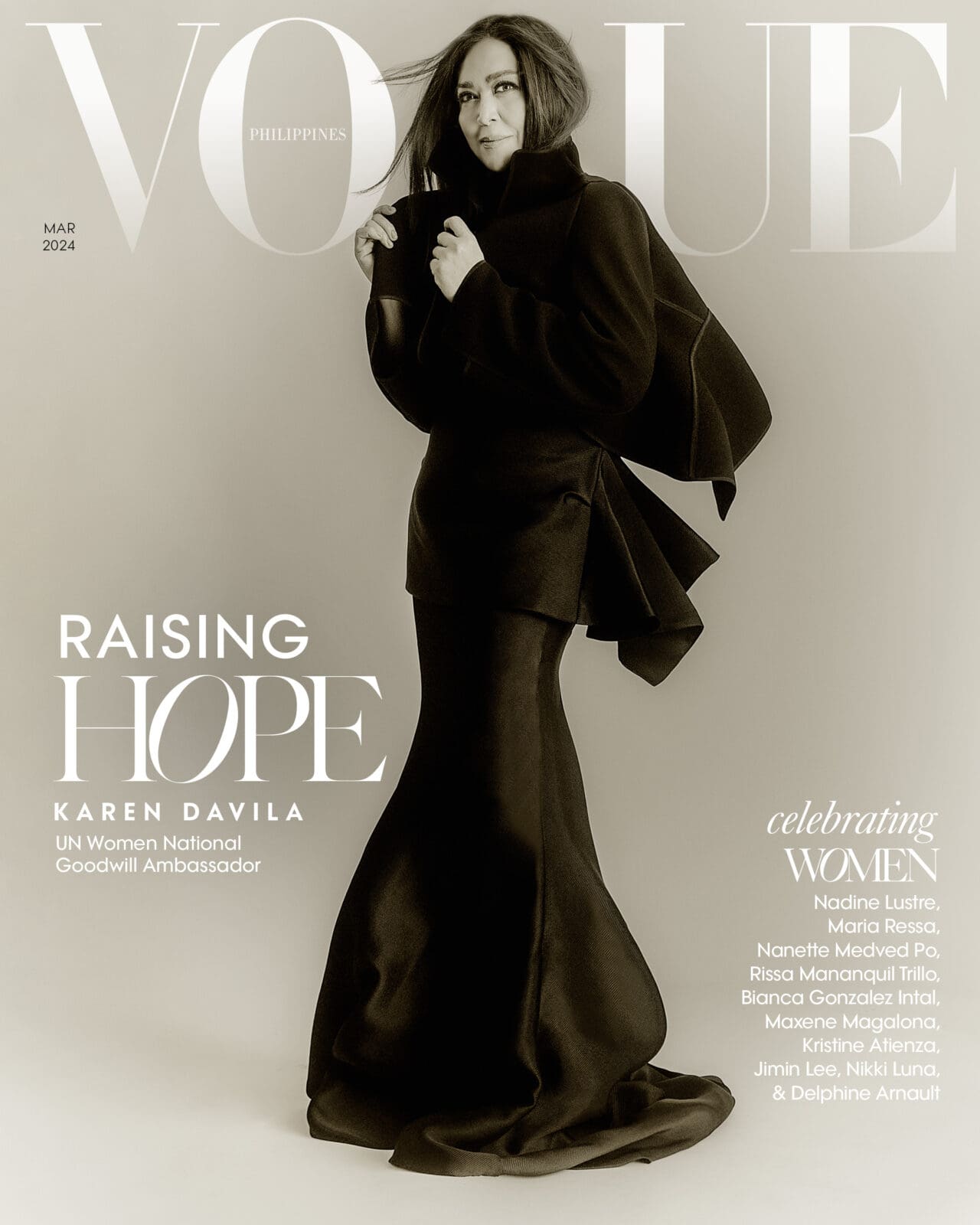Photo by Patrick Diokno
Photo by Patrick Diokno
In Sorsogon, furniture designer Milo Naval and ceramic artist Mikee Naval have carved a paradise of their own.
The pili nut, canarium ovatum, grows wildly, and almost exclusively, in the mineral-rich volcanic soil of the Bicol region. The tree is known as a stress tree, meaning it thrives even in typhoon-whipped areas, such as Sorsogon. Harvesting the pili nut is a laborious process because it is done only by hand, and extracting the buttery sliver of nut from its hard shell requires a deft crack of the machete.
Milo Naval’s pili shell lamp illustrates the designer’s codes of using local materials sustainably, transforming them from mere handicraft into functional works of art. Covered with discarded pili husks, the human-sized lamp is both organic and modern, its thousand shells creating an impenetrable armor of spikes.
The pili shell lamp guards one corner of Siama Hotel, a showcase of Naval’s furniture set in a 10-hectare coconut plantation on the outskirts of the city of Sorsogon. Thick acacia slabs from fallen trees form long communal dining tables, which are illuminated by delicate flower pendants made from raw Capiz shells. Guests sit on large woven rattan stools or lounge on generously proportioned daybeds in earthy or neutral tones. A visit to Naval’s former furniture store in Makati did little justice to his oversized pieces, but here, positioned in an open space where the outdoors flow indoors, they make perfect sense. They invite you to comfortably take up space in nature, to share a seat with a friend, or to sprawl out with your family.
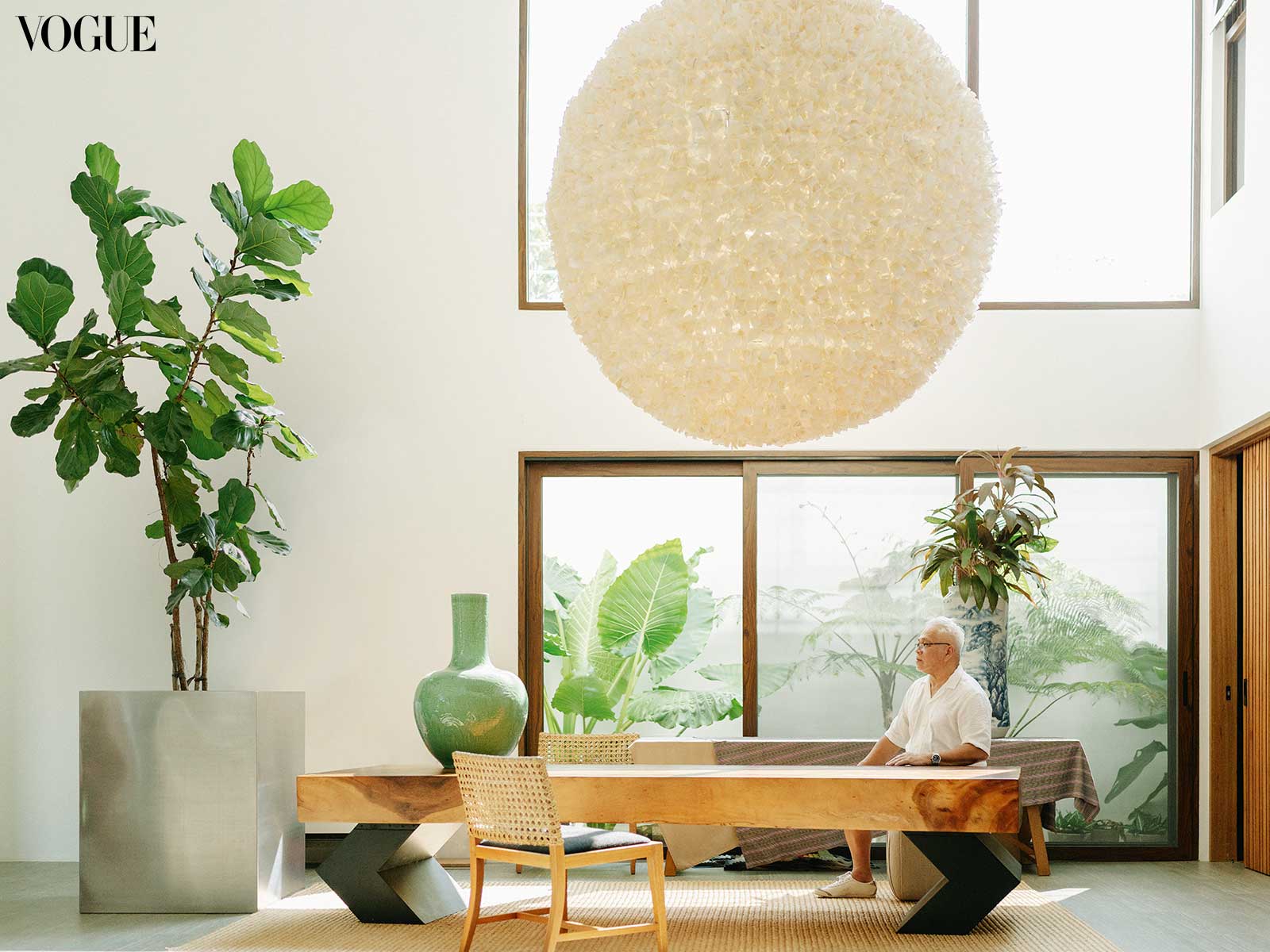
In Sorsogon, where Naval has been living for the last 12 years, he triangulates between Siama Hotel, which was built in 2013, the newer Siama Surf, a beachside resort 20 minutes away in the town of Gubat, and his recently finished residence in Sorsogon, where he lives with his partner Diana and their two children, ages five and one. He doesn’t miss the big city life of Metro Manila, and he operates his Laguna factory-showroom remotely for the most part. “I’ve been working from home even long before the pandemic,” he says.
At home, large abstract canvases are stacked against the wall—monochromatic paintings of shapes, lines, and curves. “I started painting again this year. Before, I’d paint every now and then, but this year I’m focusing on it as part of how I want to present my furniture collection next season,” he says. This new direction puts his pieces in conversation with his art and offers a more holistic way of exhibiting his work. After decades of joining local and international trade shows and presenting his furniture the same way, he feels it’s time to change things up.
On the move
On the cusp of the new millennium, Movement 8 was born. A diverse group of Filipino designers were gathered under one name to change the face of Philippine design in the international market. The Philippines was then known as a manufacturing hub and source of raw materials, but Ely Pinto-Mansor, former executive director of CITEM, believed the Philippines could be a contender in the high-end consumer market and that Filipino designers themselves would lead the charge in minimalist, modern design. “An image of a designing people is our message,” Pinto-Mansor told The Philippine Star 20 years ago.
“It’s meditative. It gets you in a state of flow”
Along with Naval, designers Kenneth Cobonpue, Ann Pamintuan, Carlo Cordaro, Tony Gonzales, Tes Pasola, Luisa Robinson, Renato Vidal, and Al Caronan composed the Movement 8 group, with Budji Layug and Eli Pinto as curators. Naval recalls their first show together in Valencia, Spain, in 1999: “Nagulat sila (they were surprised)—they [the buyers] were used to seeing classic rattan furniture. We made use of the same materials, but we took a different approach. The difference was huge,” he says. Their reputation grew from show to show, and Movement 8 successfully defined what contemporary Filipino design was and could be.
“The direction at the time was serving the foreign market. I wanted my work to show that I’m coming from this side of the world, using materials indigenous to Bicol, like abaca,” Naval says. “That was the idea behind Movement 8, to represent the country and to invite foreign guests to come to the Philippines. That was its strength.”
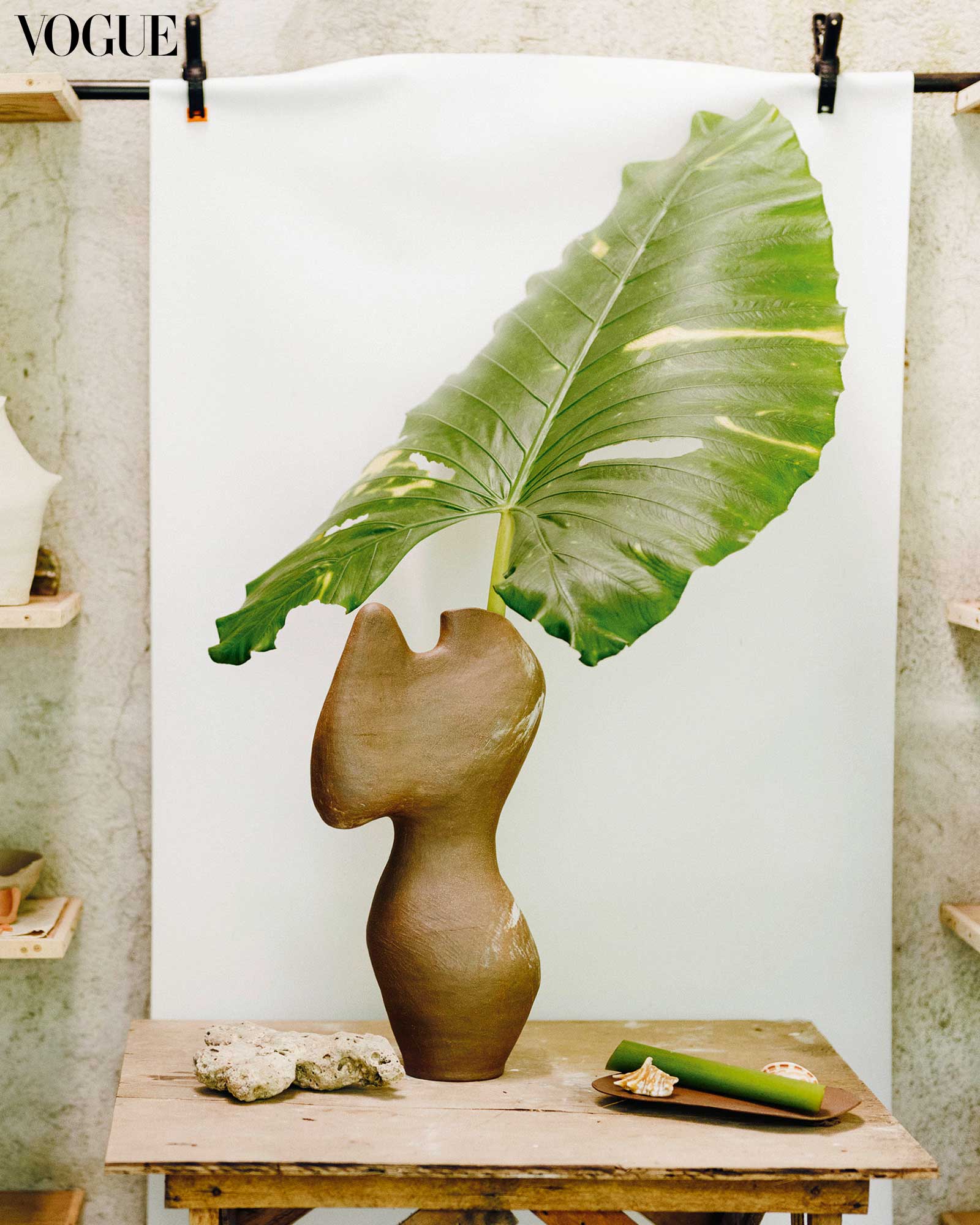
In 2008, Naval launched his own furniture line for the Philippines called OMO, which stands for On My Own. Consistent in style and committed to championing local craft, OMO quickly developed a niche market for the relaxed, large-scale pieces Naval is known for.
Meanwhile, Naval and his first wife Katherine would spend holidays in Sorsogon, eventually building their own nipa-hut inspired residence on Katherine’s family property, one which would serve as the prototype for Siama. Its name is a tribute to her Lolo Siama (from si ama) who emigrated from China and established a copra plantation, and whose descendants would govern the province. Back then, the Navals would make the 12-hour land trip from Manila to Sorsogon. Now, with direct flights to the Bicol International Airport, the hotel is an hour’s drive away, and Siama Surf an additional 30 minutes.
The architect Aya Maceda of ALAO design in Brooklyn shares how she came to be involved in the design of the hotel. “Milo studied architecture so we shared a similar interest and our conversations would typically end with Milo encouraging me to work back home,” she says of Naval, whom she considers a mentor. During one of her visits to Manila, Naval invited Maceda over to Sorsogon, wanting to show her a project he was working on. “I hopped on the next flight without hesitation. He brought me around the property filled with coconut trees where he said he dreamed of building a secluded hotel. We immediately started drawing up how the buildings and swimming pool would sit on the site and how the landscape would weave through the buildings. That very same evening, we sketched out the plans, perspectives and typical details of Siama on paper, and scrutinized them over a few bottles of wine.”

Referencing the private and public spaces of a Filipino home, Siama’s living spaces are wide open, facing the pool and garden with only woven screen partitions to filter in light. Wooden slats in the walls allow for cross ventilation. What happens during a typhoon? I ask. Naval answers that they do cover up the furniture and tuck them away, but for the most part, they let the storm rage on. He recounts the story of a TV anchor who was holidaying there with her family, when a major typhoon was about to roll through. Rather than leave the area, as guests were encouraged to do, she chose to stay and witness nature’s wet fury right there in the living room.
Fire it up
Mikee Naval, Milo’s 31-year-old daughter, arrives at the hotel, richly bronzed from morning surf sessions at Gubat. Mikee, an architecture graduate from Rennselaer in New York, had been working for an engineering firm for about a year and was planning on taking a job in Seattle when she came home for a visit—and decided to stay for good. “Coming here with fresh eyes, I just loved the lifestyle so much,” she says. Like many others who pivoted during the pandemic, the slower pace of provincial living appealed to Mikee at that point in her life. Living in an actual gubat, with easy access to the beach, and being near your family seemed the obvious choice.
She took her first pottery class at Tahanan Pottery Studio in 2021 and never looked back, diving deep into the craft mostly through self-exploration. After moving to Sorsogon, Mikee converted a storage room on the Siama property into a studio, which is now filled with glaze tests, sculptures in various stages of drying, jewelry plates for an upcoming popup, and a series of bell-shaped vessels lining a shelf along with rocks and shells and other found objects. “That’s called the single stem vase,” Mikee says, “and it’s a form I’ve been working on. I like the concept of just honoring one stem.” Last year she had a kiln built onsite, enabling her to fire her own pieces (previously she’d have her pieces sent over to Manila to be fired) and turning her studio into a fully functioning pottery workshop.
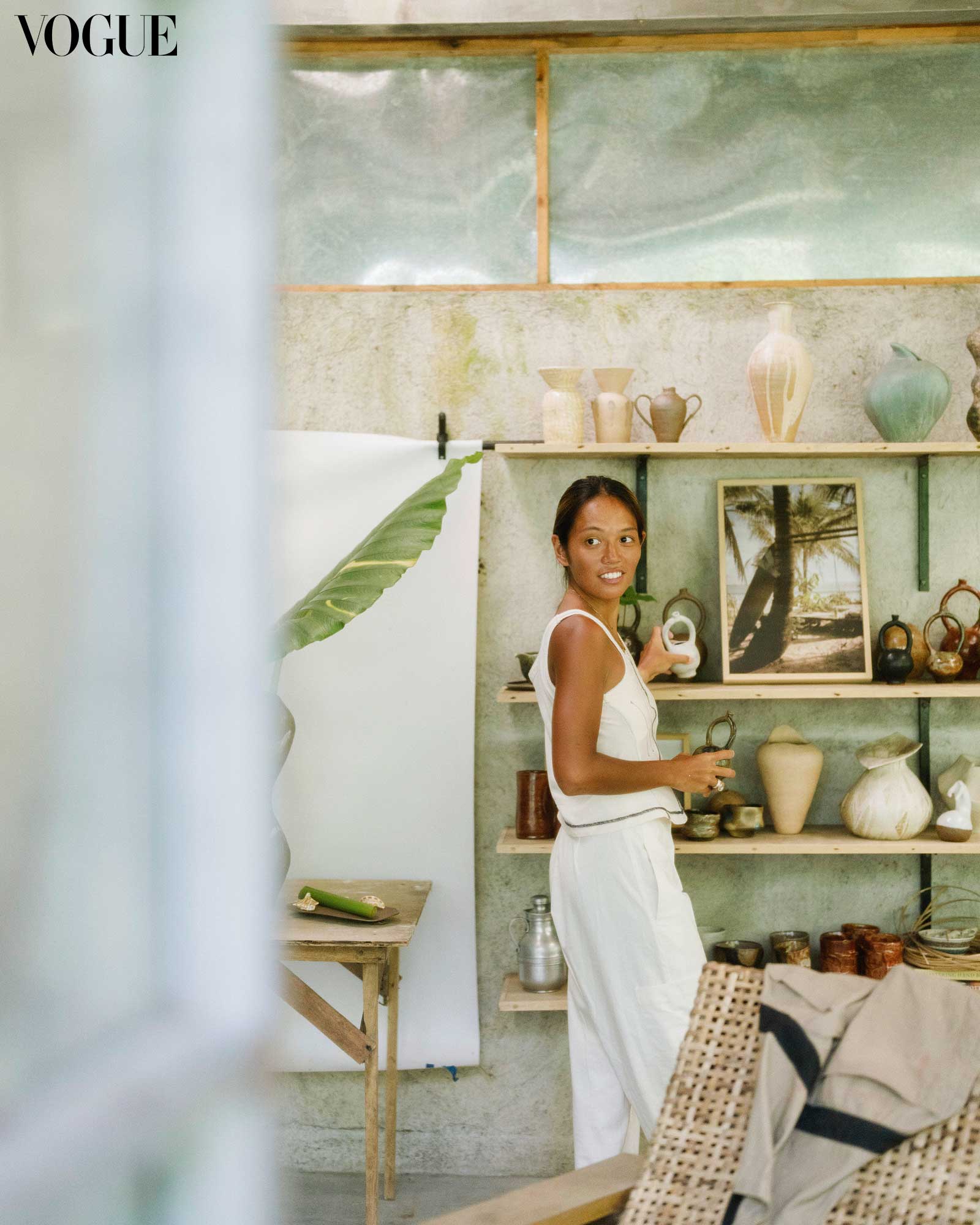
In progress is a vessel with three legs, and Mikee shows us how she builds it, taking short ropes of clay and adding it to the lip, a method called coiling. “The forms that I am drawn to and I want to make usually have a lot of curves, undulating forms, so the coil method is really ideal,” she explains. “I like this method more [than wheel throwing] just because it allows me to flow.” When she first got into pottery and didn’t have much space or even a wheel, hand building was one of the ways that she could create pottery in her room.
Naturally, we’re curious to know how her architecture background informs her pottery practice. “It’s very form focused, I want to say. We were trained to tell stories through form, and I tell the story through form rather than color, for example,” she says. Mikee shares how her stint as a façade designer at an engineering firm also relates to her work. “I would draw screws down to how they fit in with the windows. I loved how technical in the craft it was. I feel like pottery fulfills that for me. It’s art, design, but also super technical, when it comes to the whole process, from making all the way up to firing.” She urges us to try it: “It’s meditative. It gets you in a state of flow. It’s one of those things where you never really know what you’ll get in the end.”
From the source
It’s early October, and the waves of Buenavista Beach in front of Siama Surf are just starting to pick up due to the change in the wind. Mikee intends to join her first surf comp the following week. Her father had recently finished renovations to the resort, adding six new suites in a mid-century modern-ish section called Artist’s Village, just in time for the surf season. Next to the rooms is the Gallery Café, which serves addictive iced coffee drinks and displays a selection of Naval’s artworks. In contrast to the lush foliage of Siama Hotel, Naval wants the greenery over the stone-strewn garden of Artist’s Village to be more restrained.
The main building, designed with signature slotted walls and airy ceilings, houses four bedrooms facing a swimming pool, while two shed-like surf cabins, its exteriors painted black, front the beach at an angle, facing the sunrise. It’s an intimate property that wants to welcome you to its surroundings, not distract you from it. Naval emphasizes that his approach to hospitality is all about casualness and comfort. If you want to trek Mount Bulusan, or swim with the whale sharks in Donsol, or try Bicolano dishes, it’s all there for the taking.
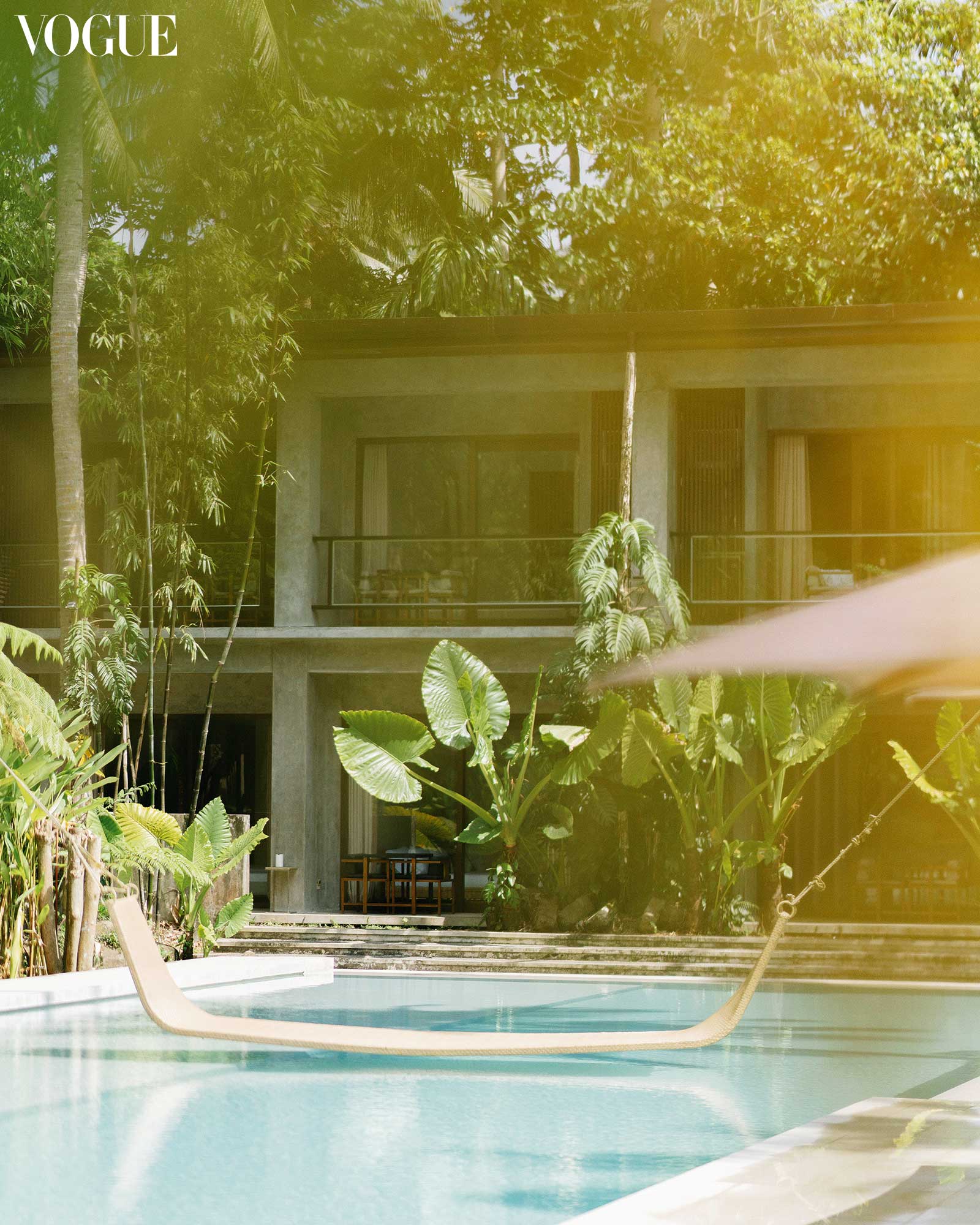
“Milo used to say that his creative process began with a material and the question, ‘how far will this take me?’” Maceda says. He has worked extensively with local fibers, fabrics, capiz, bamboo, and hardwood in his furniture pieces, highlighting their raw beauty through contemporary design. Naval may describe his style as simple and minimal, but Maceda believes that his deep appreciation and respect of local skills, and the willingness to experiment to create new techniques “have allowed him to create sublime pieces that feel familiar yet so modern.”
Right now, in developing Siama, Siama Surf, and a future Siama Mountain, the material is Sorsogon itself, a province that he loves so much he never wants to leave. He wants to know how far this can take him. It’s a journey that has taken him to a place he now calls home, and wherever you are in Sorsogon, he wants you to feel at home, too.

